Summer is just around the corner, making it the perfect season to start playing with your bracelets. Turquoise has become a popular choice in the cultural collectibles scene thanks to its unique sky-blue hue, warm texture, and the captivating way it gradually develops a jade-like patina through handling. However, faced with an overwhelming array of turquoise bracelets, many newcomers often feel lost due to lack of experience: How to avoid buying fakes? How to choose a style that suits you? What techniques ensure beautiful patina development? This guide offers a systematic introduction for beginners, covering budget planning, category selection, vendor screening, and care techniques.
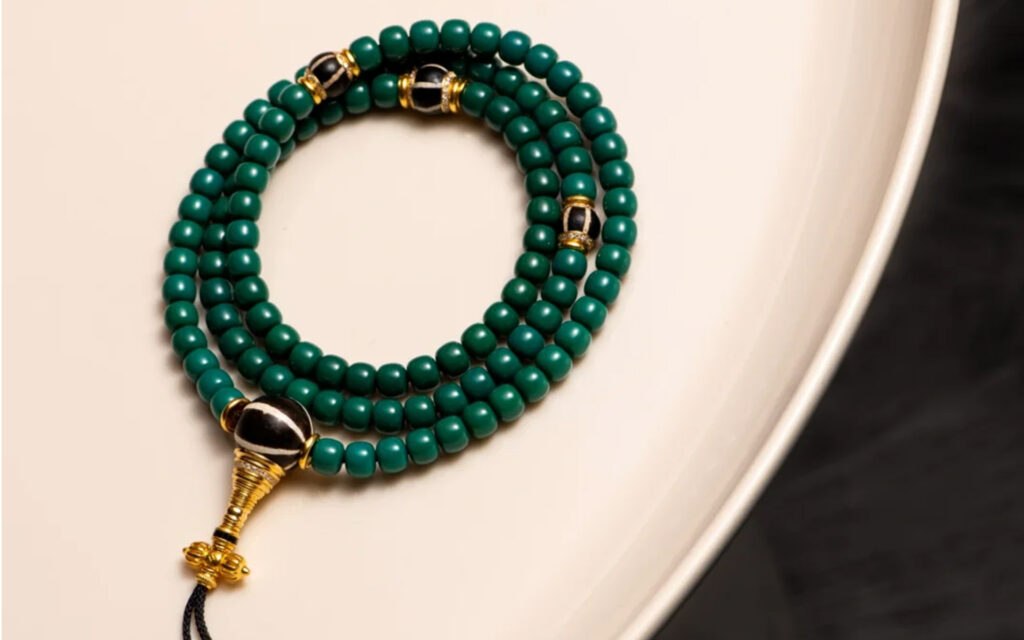
I. Define Your Budget: Stay Within Your Means, Avoid the “Greed Trap”
Turquoise prices vary dramatically, ranging from ordinary stones costing tens of yuan per gram to top-tier porcelain-blue turquoise priced at thousands per gram. Quality directly dictates cost. For beginners, the first step is to set a budget based on your financial capacity, avoiding the pitfall of chasing “high-end deals at low prices.”
Low Budget: Opt for standard porcelain-grade turquoise from Shiyan, Hubei, or smaller round beads/spacers. These pieces feature lighter hues with significant color-changing potential through handling, ideal for experiencing the process.
Mid-Budget: Consider medium-to-high porcelain-grade turquoise like Yajiao Mountain or Yunguansi material. These offer uniform coloration and readily develop a jade-like patina with handling.
High Budget: Pursue top-tier high-ceramic blue “jelly material” free of iron lines, or uniquely carved beads. These pieces hold both collectible and playable value.
Pitfall Warning: Be wary of sellers claiming “low-priced high-ceramic blue” or “unoptimized raw ore,” as these may indicate dyeing or resin injection. Prioritize vendors offering certification from authoritative institutions (e.g., China University of Geosciences Jewelry Testing Center).
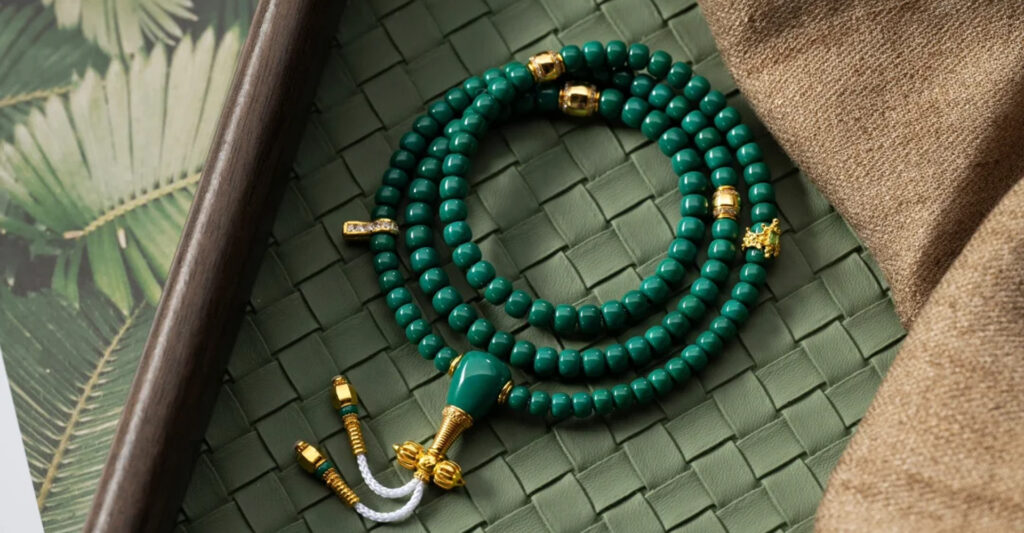
II. Selecting Categories: Balancing Style and Practicality
Turquoise bracelets come in diverse styles. Beginners should choose based on personal taste and wearing occasions:
Round Bead Bracelets: Classic and versatile for daily wear. Ensure uniform bead size to maintain aesthetic appeal.
Antique-Style Bead Bracelets: Barrel-shaped design offers a smooth, rounded feel that conforms to the palm during handling, ideal for comfort-focused enthusiasts.
Free-Form Bead Bracelets: Preserve the natural shape of the raw stone, offering relatively affordable options for enthusiasts who prefer an organic aesthetic.
Carved Bead Bracelets: Featuring intricate designs like swastika motifs, pi xiu, or Buddha heads. Prioritize smooth carving details and avoid rough machine-carved pieces.
Selection Tips: Beginners may start with round or vintage-style beads, as these designs demand higher material quality and directly showcase turquoise’s porcelain-like luster and color. For those seeking individuality, pairing small carved beads with plain strands reduces trial-and-error costs.
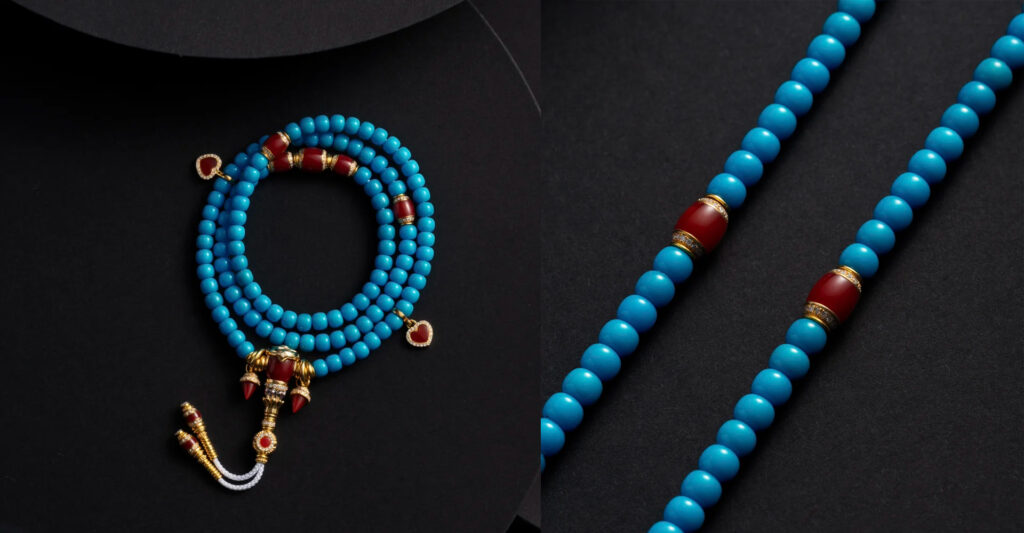
III. Screening Vendors: Reliable Channels Ensure Quality Assurance
The turquoise market is a mixed bag, so beginners should screen trustworthy vendors through the following methods:
Certification Verification: Prioritize vendors providing National Gemstone Testing Center (NGTC) or China University of Geosciences certificates, which must include key data such as density and refractive index.
Reputation Check: Research vendor reviews on cultural artifact forums and communities to avoid one-time-deal micro-merchants.
After-Sales Policies: Confirm support for no-questions-asked returns/exchanges, complimentary maintenance, and whether they provide handling guidance.
On-Site Visits: If feasible, visit turquoise hubs like Shiyan, Hubei or Beijing’s Panjiayuan to select pieces in person for a more intuitive experience.
Beware of Sales Tactics: Exercise extreme caution if sellers emphasize “absolutely untreated” or “century-old material” yet refuse to provide certificates, or offer steep discounts under pretexts like “internal channels” or “clearance sales.”
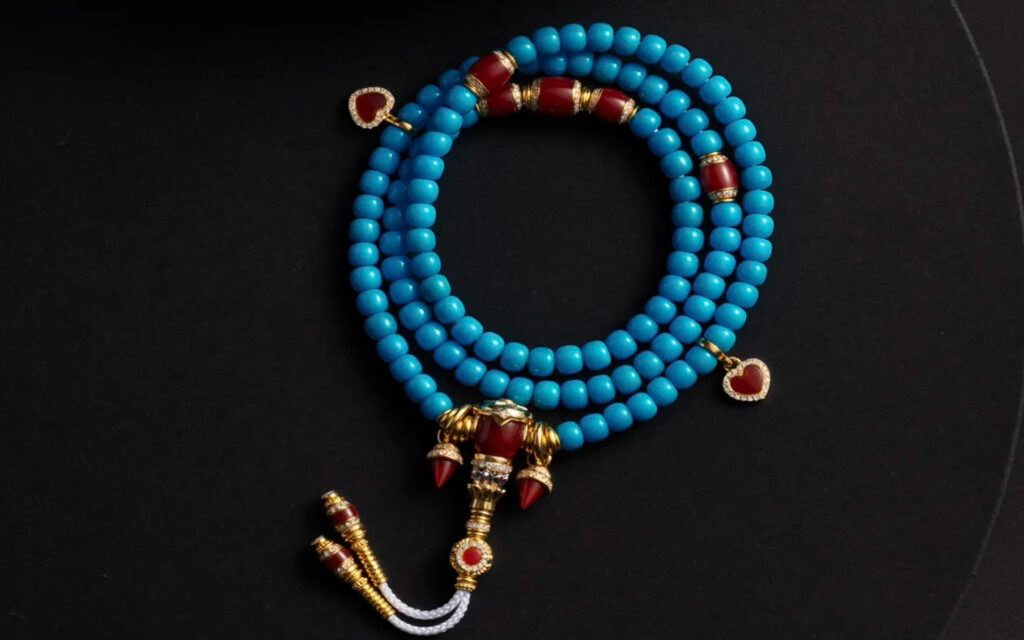
IV. Handling and Maintenance: Patience is Key
The essence of turquoise handling lies in the “interaction between person and stone.” Through the permeation of natural oils and body heat from the hands, the stone gradually develops a patina and jade-like luster. Beginners should master these techniques:
Clean Hands: Wash hands thoroughly before handling to prevent sweat or cosmetics from contaminating the surface.
Gradual Approach: Wear cotton gloves for 1-2 weeks initially to build a base patina before direct contact, preventing color distortion.
Avoid Heavy Sweat: Pause handling during summer if hands sweat excessively to prevent alkali return or uneven discoloration.
Regular Cleaning: Gently brush surface dust with a soft-bristled brush; avoid ultrasonic cleaners.
Long-Term Storage: When not worn, place turquoise in a sealed bag with a small amount of water to maintain humidity.
Color Transformation: After handling, turquoise typically transitions from light blue to deep blue or greenish-blue, eventually achieving a jade-like translucency. This process takes months to years—patience is essential.
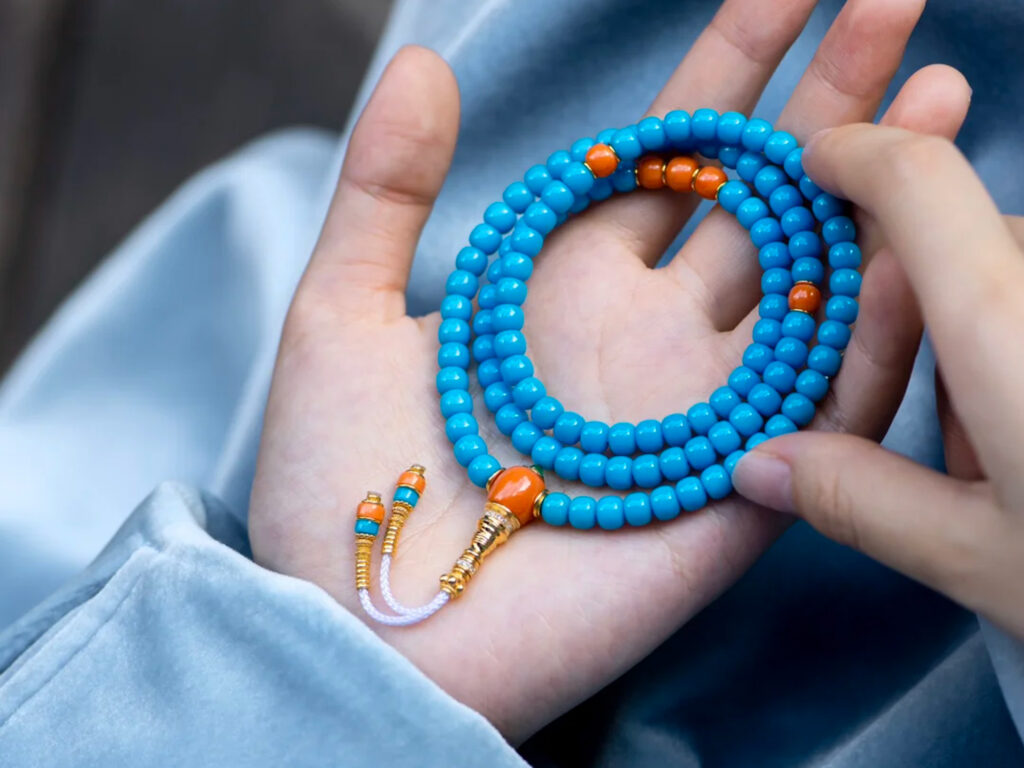
V. Advanced Recommendations: From Enthusiast to Collector
As experience grows, beginners may gradually explore:
Mastering Identification: Recognize characteristics like porcelain-like hardness (high porcelain indicates no nail scratches) and iron vein distribution (natural veins flow organically).
Focus on regional characteristics: Hubei’s Yajiao Mountain material is renowned for its “jelly-like texture,” Yunguansi material is celebrated for its high-ceramic blue, while Qingu material often yields “white-blue” stones.
Explore customization: Collaborate with carvers to design one-of-a-kind turquoise bracelets.
The allure of turquoise bracelets lies not only in their aesthetic appeal and appreciation potential but also in the “dialogue” with the stone during handling. Beginners need not pursue top-tier pieces initially; instead, gain experience through practice to gradually develop personal taste and a collection system. Remember: Collectibles have no inherent hierarchy—it’s the collector’s perspective that matters. What suits you best is truly the finest.